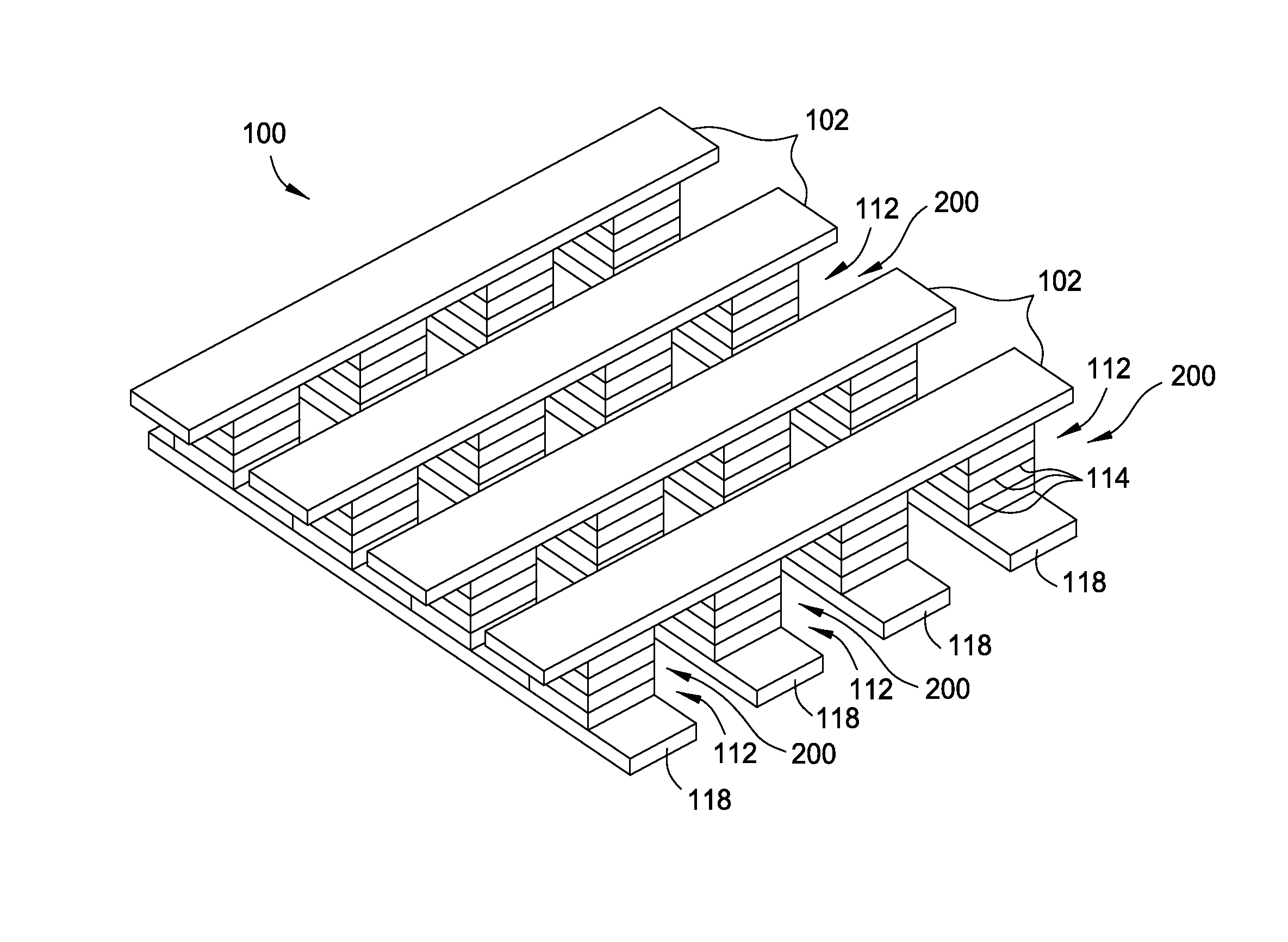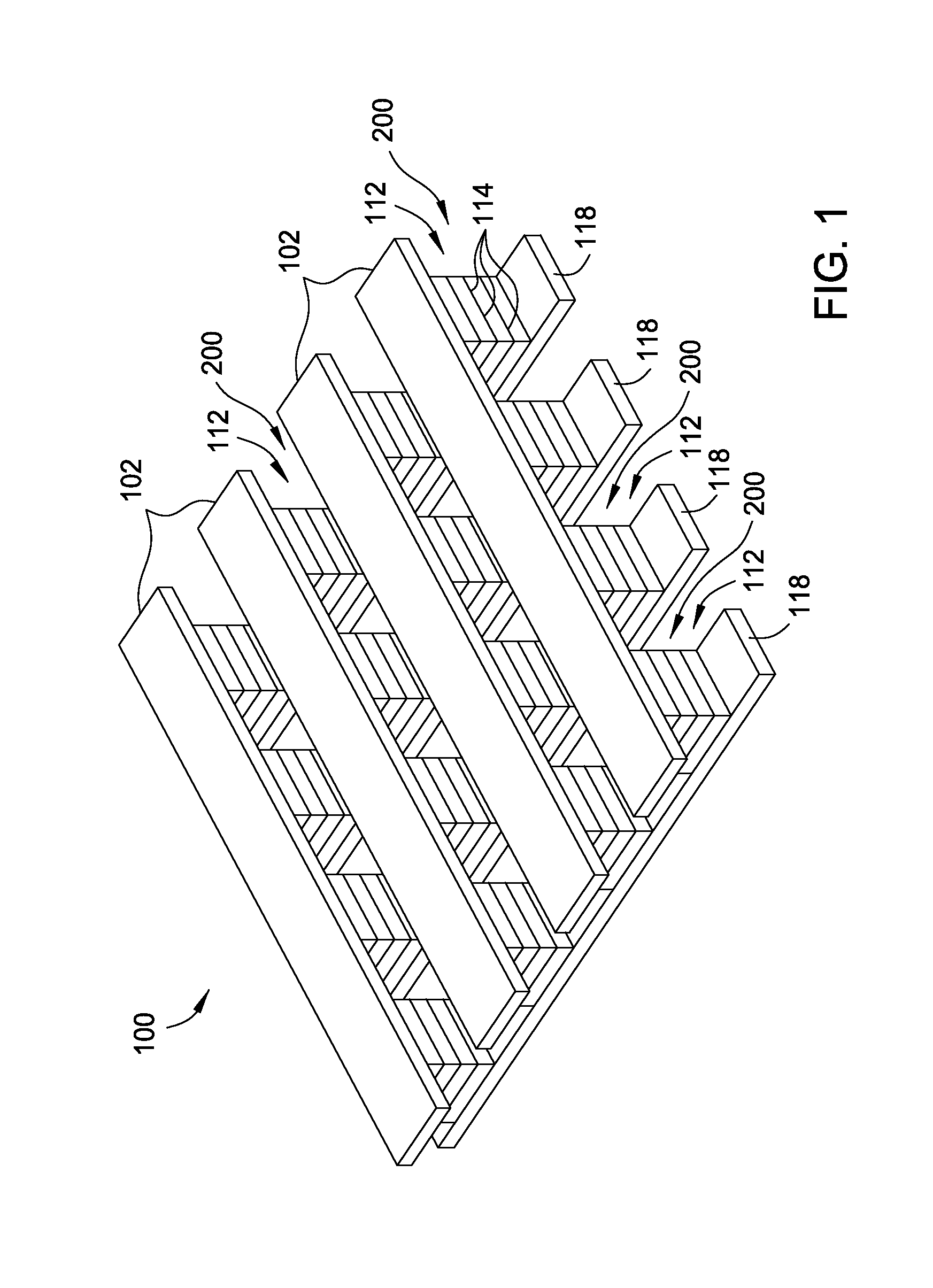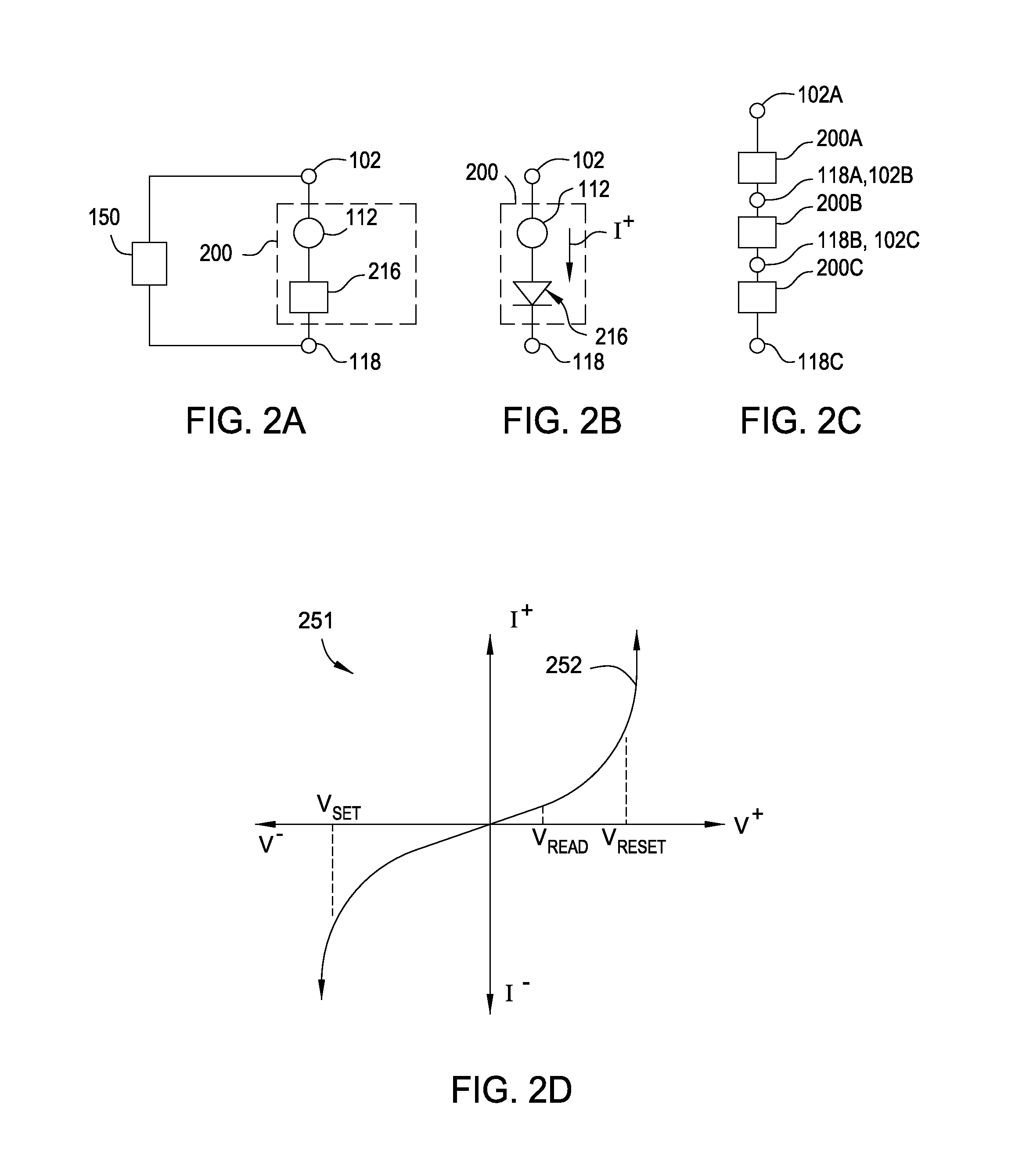Interface layer improvements for nonvolatile memory applications
a nonvolatile memory and interface layer technology, applied in the direction of bulk negative resistance effect devices, semiconductor devices, electrical equipment, etc., can solve the problems of difficult to use low resistance metal oxide films to form reliable nonvolatile memory devices, difficult to reduce the operating current of the device, and the resistance of these films and/or the ratio of high-to-low resistance states is often insufficient to be of use within a practical nonvolatile memory device.
- Summary
- Abstract
- Description
- Claims
- Application Information
AI Technical Summary
Benefits of technology
Problems solved by technology
Method used
Image
Examples
Embodiment Construction
[0027]Embodiments of the invention generally relate to a resistive switching nonvolatile memory device having an interface layer disposed between a highly doped silicon electrode and a variable resistance layer fabricated in the nonvolatile memory device, and methods of fabricating the same. In one embodiment, the interface layer is a high-k layer having a lower electrical effective oxide thickness than native silicon oxide to act as a diffusion barrier between the variable resistance layer and the silicon electrode. The high-k interface layer also increases the barrier height for electron injection / tunneling at the interface between the silicon electrode and the variable resistance layer, which inhibits the flow of current at the interface, reducing switching currents and voltages of the nonvolatile memory device. In another embodiment, the interface layer is a fabricated silicon oxide layer resulting in an improved diffusion barrier between the variable resistance layer and the si...
PUM
 Login to View More
Login to View More Abstract
Description
Claims
Application Information
 Login to View More
Login to View More - R&D
- Intellectual Property
- Life Sciences
- Materials
- Tech Scout
- Unparalleled Data Quality
- Higher Quality Content
- 60% Fewer Hallucinations
Browse by: Latest US Patents, China's latest patents, Technical Efficacy Thesaurus, Application Domain, Technology Topic, Popular Technical Reports.
© 2025 PatSnap. All rights reserved.Legal|Privacy policy|Modern Slavery Act Transparency Statement|Sitemap|About US| Contact US: help@patsnap.com



